Doepke DFS2 Audio Grade Differential Switch
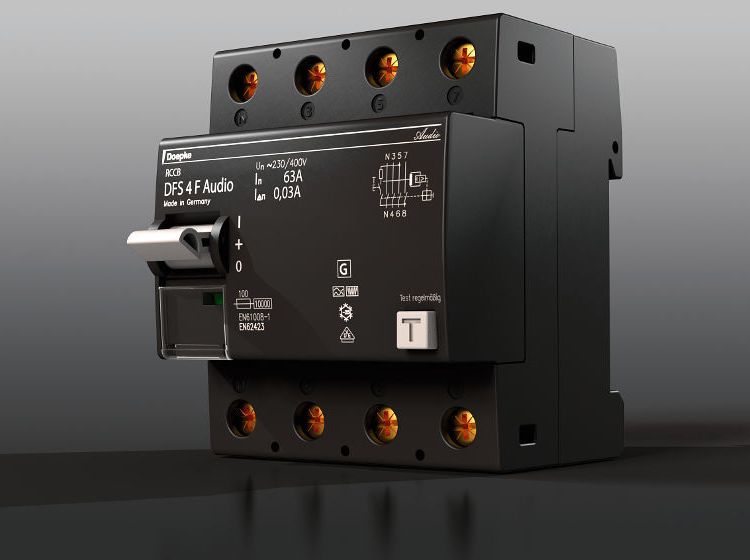
Review samples supplied by Kemp Elektroniks
Retail price in the Benelux (including 21% VAT):
DFS2 single-phase model: € 600 (as reviewed)
DFS4 3-phase model: € 845
Apart from the main switch or, in my case, a combined fuse/switch, there are two types of protective elements in a utility box. There’s the commonly known Fuse or automatic magnetic switch. The function of these, as well as the Cylindric Fuse Cartridge (stop/zekering in Dutch) or Miniature Circuit Breaker, MCB in short (installatieautomaat in Dutch) is to prevent a fire in case of a short circuit or overheating of the wiring.
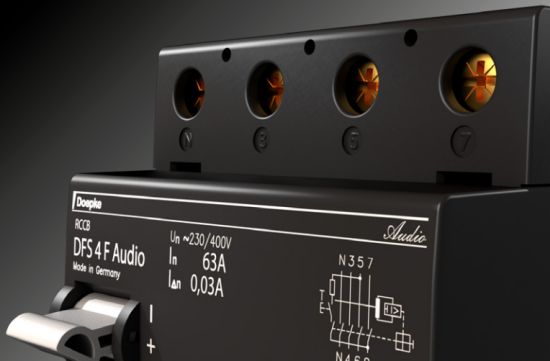
Then there’s the much less known Differential Switch, also called Residual Current Circuit Breakers or RCCB in short (aardlekschakelaar in Dutch). The main function of these units is to protect against electrocution. A Differential Switch compares the in- and outgoing currents through live and neutral, the sum of these has to be zero. The only disturbance possible in this balance is when a certain current flows to earth. If this current flows through the body of a human being, this can be life-threatening. This is where the differential switch kicks in and disconnects the circuit from the mains if this current is over 30 mA.
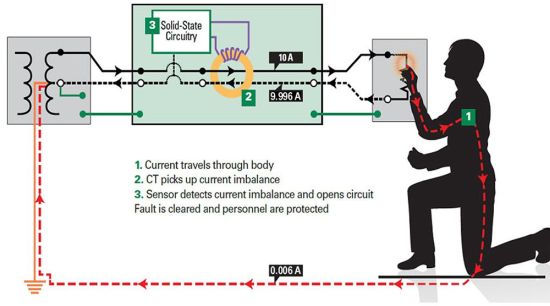
Since the Differential Switch was made obligatory in 1975 in the Netherlands, many audiophiles have been wary of its negative influence on the sound. After all, there was now an extra switch (+inductor) in the power circuit. In forums, one can read how they experienced a positive change in their system’s sound after bypassing the switch. Of course, this is not recommended and not even legal but who’s going to know, right? Well, as a reviewer, I connect and disconnect lots of equipment on a daily basis and that includes the odd prototype that has not yet been fully tested. Also, although the worst that happened was the triggering of the fuse due to high inrush current, there is always the possibility of a device being faulty in a way that does not trigger the Circuit Breaker. So, even if I am forgoing an amount of sound quality, I just do not want to risk anything by bypassing the Differential Switch.
After having replaced the apartment’s standard Hager MKS 5 16 Circuit Breaker with an audiophile GigaWatt G-C16A Circuit Breaker, I was aware that the standard Differential Switch was still in the circuit but, nevertheless, my system sounded really great, heaps better than with the standard Circuit Breaker, actually. Some time after publishing the review, I was again reminded by someone with a similar setup to bypass the Differential Switch, hinting at the considerable improvement to be had. Another reader notified me that he had the answer to my prayers. He spoke of a new audiophile Differential Switch that would make my GigaWatt Circuit Breaker perform twice as good.
As luck has it, shortly thereafter, I was approached by Ronald Kemp for a review of the brand new Doepke DFS2 Audio Grade Differential Switches. Precisely the product that was recommended to me only days earlier. Needless to say, I jumped on the occasion.
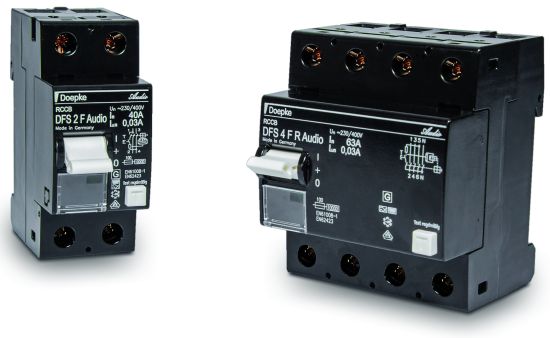
Technical
The Doepke DFS2 Audio Grade Differential Switch is an audiophile RCCB that claims to introduce no downsides while offering the same effective ground leak security as standard units. The unit is also available as the DFS4 for 3-phase installations. Tested here is the single-phase DFS2 model.
Doepke was among the first companies to develop and produce RCCBs and they produce high-quality OEM products for several major companies in the switchgear market. According to the manufacturer, the DFS2 and DFS4 are the world’s first audio/video grade differential switches and, indeed, I can’t say that I know of a competing product.
The Doepke DFS2 and DFS4 have not been certified for the US and thus are not UL listed. Doepke does sell DFS4 RCCBs in the US but for very special applications, where a UL certification is not mandatory.
With solid, silver-plated connections up to 50 mm2 and 0 AWG massive OFC internal conductors, large contact areas with hydraulic high contact pressure for the lowest possible impedance and a complete absence of undesired inductive parts, these switches are available as a single-phase and a three-phase unit with a nominal current rating of 40A / 63 A respectively which ought to be enough for even the largest audio system.
Alas, the extreme quality comes at a hefty price tag. Therefore, the big question that I hope to answer below is, is it wise to invest 600+ euros in an Audio Grade switch?
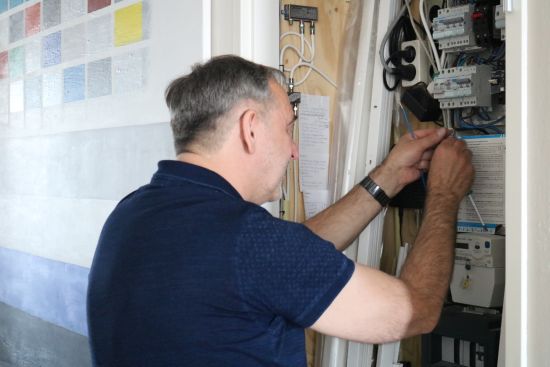
Here is Ronald Kemp, installing the Differential Switch in my utility box
Installation
Ronald Kemp is not only a reseller of A/V accessories, he actually has an engineering background and possesses the official papers that allow him to make changes to the utility box. Upon agreeing to review the Differential Switch, Ronald kindly offered to install the Differential Switch himself.
In order to allow individual and repeated comparisons over a longer period of time, I asked Ronald to install the Residual Switch independently from the existing infrastructure so that I could switch the cables myself. But he had a better idea: a parallel install.
Ronald installed the Doepke DFS2 right next to the building-standard Hager CDA 540G switch and connected in the inputs in parallel and did the same with the two switches’ outputs. He did all this using new 2,5mm2 solid-core cabling of the same type for both units. This way, all I needed to do to make comparisons is to switch off one switch and then switch on the other. Ronald assured me that this parallel wiring does not result in a loss of quality because the coils and electronics in the disabled switch are inactive but he also offered to finalize the installation using a single switch once I had made my final decision.
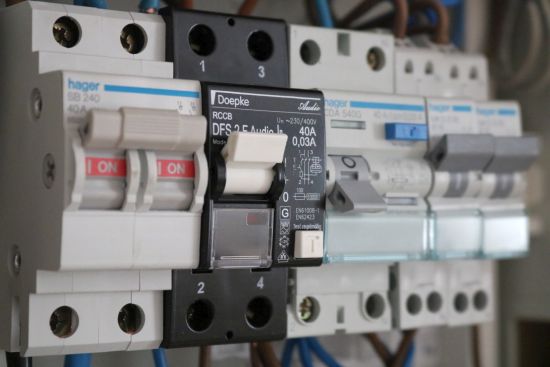
The outputs of the two parallel Differential Switches feeds the GigaWatt G-C16A Circuit Breaker which in turn feeds an uninterrupted run of 2,5mm2 solid-core cabling which connects to a GigaWatt G-044 double schuko wall outlet behind the audio system which finally feeds the two extension blocks that feed all my equipment.
System Context
For assessing the Doepke DFS2 Differential Switch, I used various audio components in different combinations. The main components are the Antipodes CX+EX Music Servers, Jay’s Audio CDT-2 MkII CD transport, CH Precision C1 and Aqua Formula xHD DACs and Magico S1 MkII and Martin Logan ESL15A loudspeakers. All the power cables in this system are Belden 19364 with Bals schuko and Oyaide C-004 IEC.
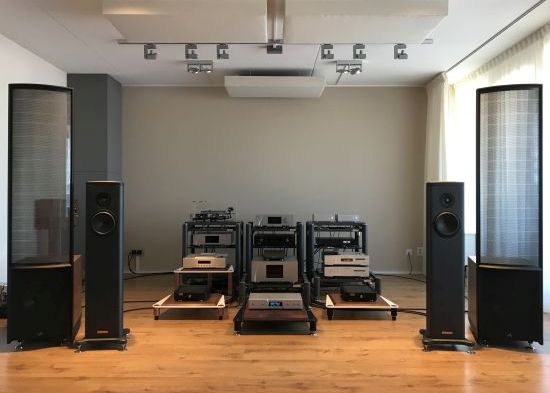
Listening
As a deviation from my usual reviewing, I conducted the initial test together with Ronald. Since he was here anyway, he was curious to hear how it would work out in my situation. Not that he lacked confidence, though :-).
Prior to installing the switch, we listened to a couple of tracks using the Martin Logans. After the installation, Ronald advised to just leave the system powered on and wait as long as possible before resuming the listening. This was easy because, as it turned out, we had plenty to talk about. The great thing about Mr. Kemp is that he is both an audiophile and an engineer which allows him to explain in a technical sense what he is hearing. Interestingly, he also honestly admits to sometimes hearing things that he cannot really explain from his engineering background. In these cases, however, he does usually have theories. It’s these kinds of subjects that made for a very interesting conversation and I think we must have chatted for an hour easily before finally hitting play.
Within a few bars of music, it was clear that the bass had become more authoritative but without also becoming fat or less well-defined. It was unmistakably more robust but still crispy and absolutely nothing was lost in terms of speed, transient attack or articulation. The midrange had become richer and more organic yet also better-textured, more fleshed-out and, like the bass, it was absolutely not just a matter of added cream or fatness as can happen with inductance from certain cables. The treble was also very different, much more realistic, actually, now possessing of more body and more distinct harmonics. Now I could much better hear the different elements that make up a hi-hat sound (the initial whack followed by a rich resonance with varied texture, in turn, followed by a decay) rather than predominantly hearing the upper swooshes.
Tonally, clearly, everything was better. Sometimes and especially with power products, a tonally fuller sound will also lead to a reduction in attack and/or perceived speed but, thankfully, the pacing also remained unchanged. Moreover, the dynamic differences were now more pronounced. The music did not sound louder or more impactful in itself (you can’t go louder than loud) but the difference between soft and loud had become much more noticeable which did actually increase the dynamic range.
Whereas the standard Hager switch always seemed pretty detailed to me before, the Doepke DFS2 now revealed it as being flatter and paler in tonality as well as soundstaging. Finally, and perhaps most importantly, the entire presentation of the music was now more entertaining and more involving.
The standard Hager switch tended to fill the room with more of a metronome-like sameness to it in terms of the movement within the soundstage. Compared to what I was hearing now, the soundstaging without the DFS2 was actually quite flat and static. In a word, the sound with the Doepke DFS-2 was simply more realistic. This was noticeable from the more distinct “breathing” of the music, the way that the performance comes alive and energizes the room in more of a natural ebb and flow.
Skeptics will perhaps pull the wishful thinking card but this is most definitely not the case. First off, since this is a review product I am not “listening with my wallet” and further, I’m not one to automatically assume that something expensive must also sound better. But in order to be 100% sure as well as to see if the switch had developed over time, I had to switch back to the regular Hager switch. Mind you, I really did not want to because ever since the DFS2 was in the circuit, and having switched between the Logans and the Magicos as well as having used all the available sources, there was not a single day that I did not thoroughly enjoy the newfound performance of my system.
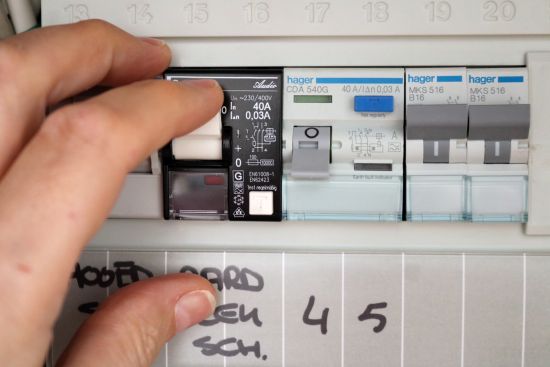
Nooooo, I don’t want to switch back!
Back to standard
After 3,5 weeks and having done some final concentrated listening using a playlist with all sorts of well-known tracks, reluctantly, I switched back to the standard switch.
The first thing that I noticed was some spotlighting in the upper midrange but not accompanied by higher resolution. The peaks of notes were harder and sometimes a little harsh yet less well-defined and somehow blurrier. Bob James’ piano notes, which were so beautifully subdued yet decisive and artfully varied with the Doepke were now reduced to a simpler, keyboard-like, restrained-dynamic same-ness that did no longer evoke the same emotional response from me. It’s quite pale in comparison and just… a little boring now. In addition, there is less depth in the color saturation as well as in soundstage, which is considerably flatter but also more static. This presentation, while technically great, just does not have the same level of living and breathing, in-your-room-like performance. And it only takes a couple of bars to know for sure that this makes all the difference.
Now go figure that I felt exactly the same way after installing the GigaWatt Circuit Breaker in place of the standard Hager unit. That change was absolutely fundamental and it made me not want to part with the new Circuit Breaker anymore, but now, the exact same goes for the Doepke Differential Switch and maybe even more so. Removing the Doepke from the chain makes me feel like I removed the Gigawatt Circuit Breaker along with it!
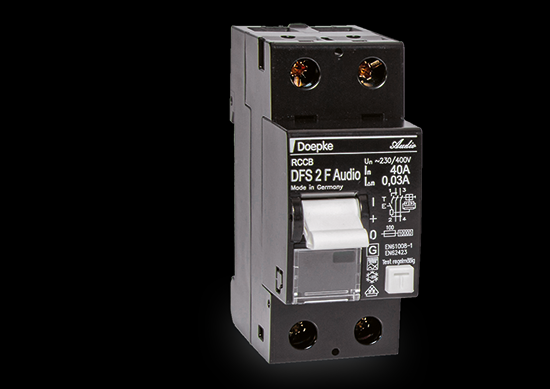
Removing Bottlenecks
The way I see it, the main power delivery to an audio system is not the place where you should perform equalizing. Here, you want to remove as much as you can any obstructions and transitions that reduce dynamics and textures, insert edge or add coloration. If you want to tune the system using power cords then that is best done at the component level and with one component at a time. But this review is not about that. Rather, it emphasizes the importance of removing bottlenecks.
In audio, everything is relative and all the details matter. Even if different situations may call for different cables and accessories, the unrestricted delivery of power is fundamental for the sound quality. That does not mean that every transition needs to have 6 layers of exotic platings but it does mean that these connections need to be robust and remain solid over time and the Doepke’s hydraulic contacts will no doubt provide precisely that. Admittedly, I have taken a detour route in leaving the subject of this review to the very last but normally, the Doepke Differential Switch should be considered as the foundation onto which you can build the rest of your audio system.
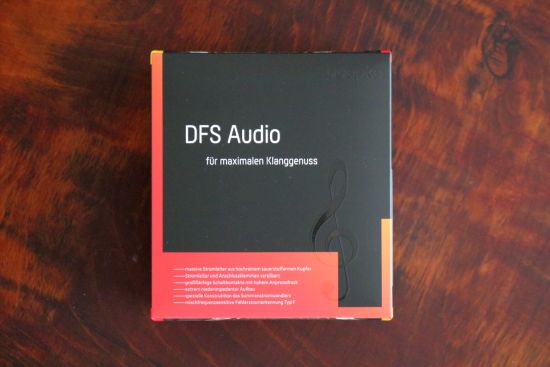
Update 21-07-2020
Now that I have lived with the switch for over a month and have done several more back and forth switches between the Doepke and the standard Hager switch, I have come to the conclusion that the Doepke’s influence is indeed substantial but its ultimate success will depend on the synergy with the connected equipment.
For instance, when I used the Aqua La Diva CD transport with the Formula xHD DAC, the Doepke switch was precisely what was needed to enhance the sound in all the right ways and without any downsides. Later, I realized that this is because the Aqua components sound slightly lean themselves and are very nicely balanced out by the Doepke switch.
The switch also worked miracles with the Audio GD Master 1 preamplifier and Master 2H power amplifiers. These are not at all lean-sounding products but they are so utterly neutral and so lively and expressive that they, too, only benefitted from the Doepke’s blessings.
With the CH Precision system, however, at some point, I started having doubts. You see, these ultra-high-end components are so meticulously designed to sound both utterly neutral as well as superbly refined. They are highly detailed but very subtle and never edgy. They just sound perfectly neutral and fully natural just the way they are and they are in no need of any alterations. While the Doepke switch made many of the tracks that I played sound more involving, ultimately, I came to realize that the extra richness and body could sometimes also mask the components’ bass articulation and natural spriteliness to some extent.
Although this puts matters in perspective, this does not really change my views as illustrated in the initial review. The Doepke DFS2 really does do all the things I described. The only provision is that its success will depend on the sound of the existing system and on personal preferences.
Conclusion
To answer the question that I posed earlier on, yes, 600 euros is serious money but HECK YES, is the Doepke ever worth it! After having gone from a fully standard power situation via a series of upgrades to a full audiophile solution I can only say that the differences in each step are far from subtle and in the case of the Doepke DFS2 Audio Grade Differential Switch, the difference is positively substantial.
Especially if you have a system that tends to sound a little lean or is lacking body or fullness then the Doepke switch is an absolute no-brainer.
External Links
Manufacturer: Doepke
Distributor for the Benelux: Kemp Elektroniks
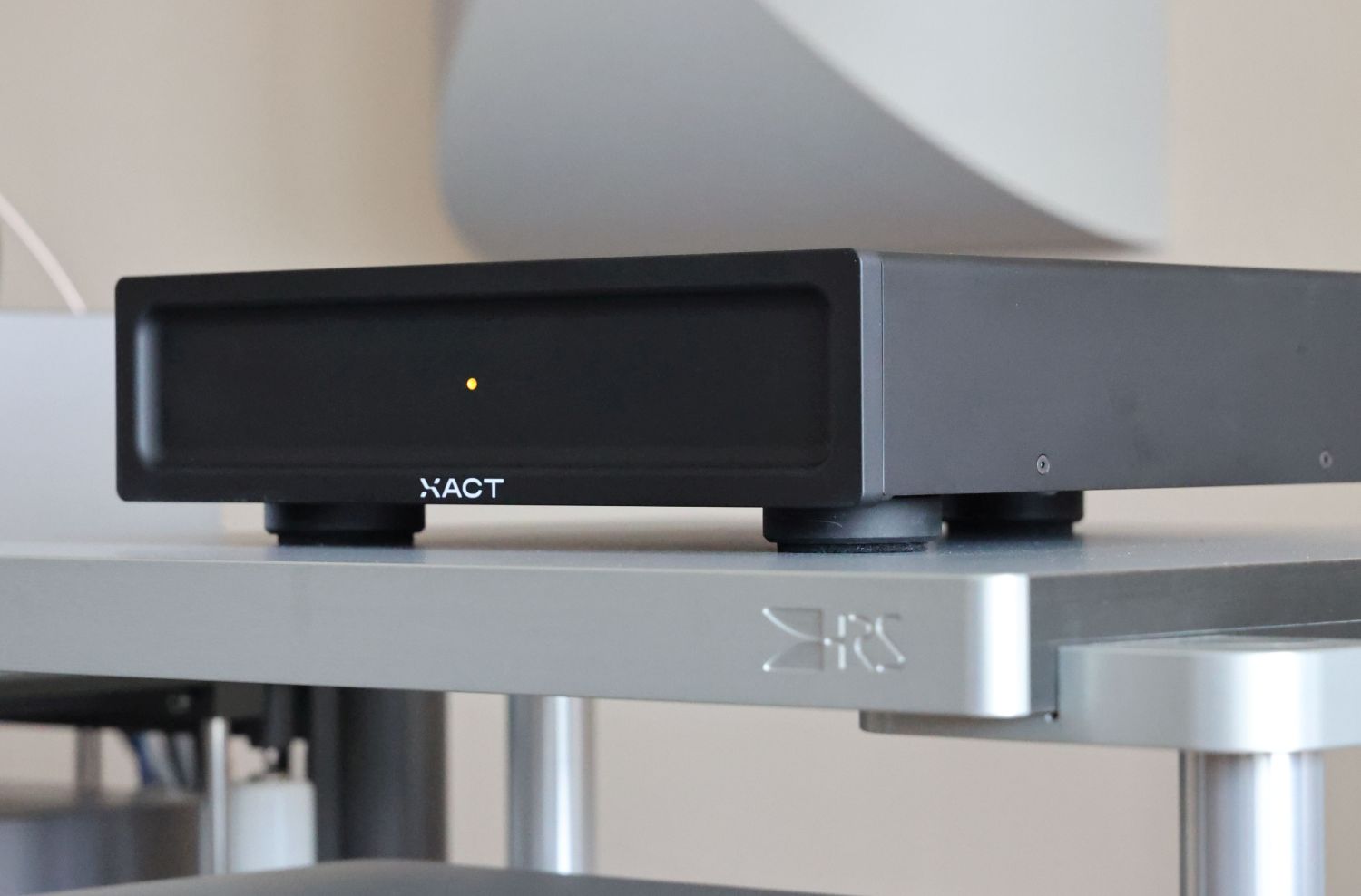
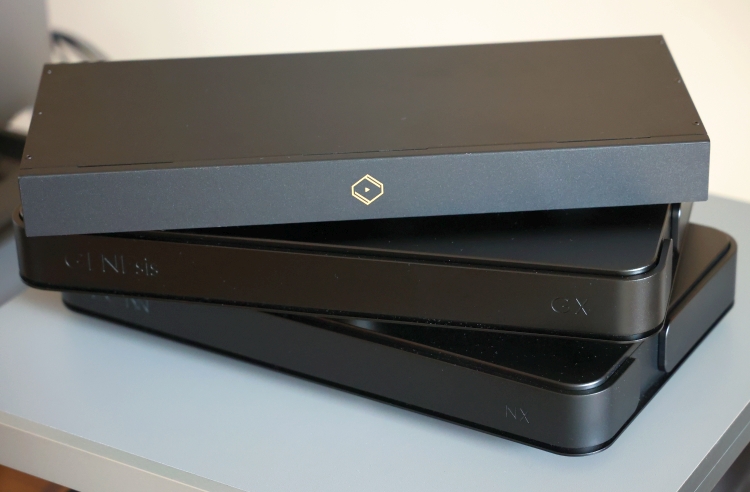
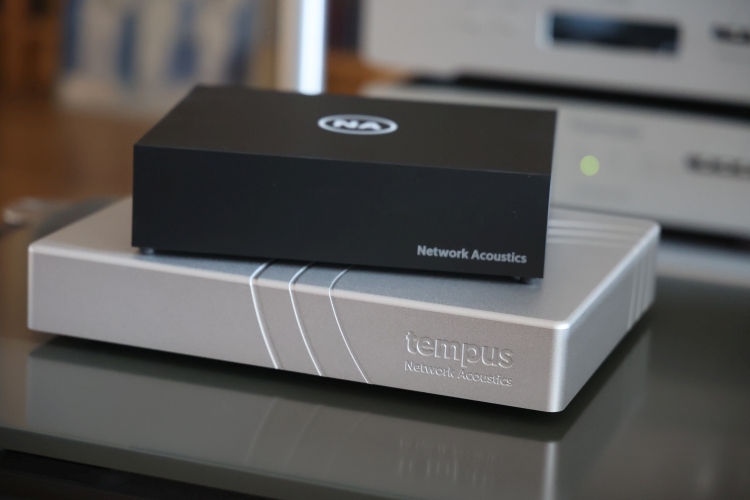

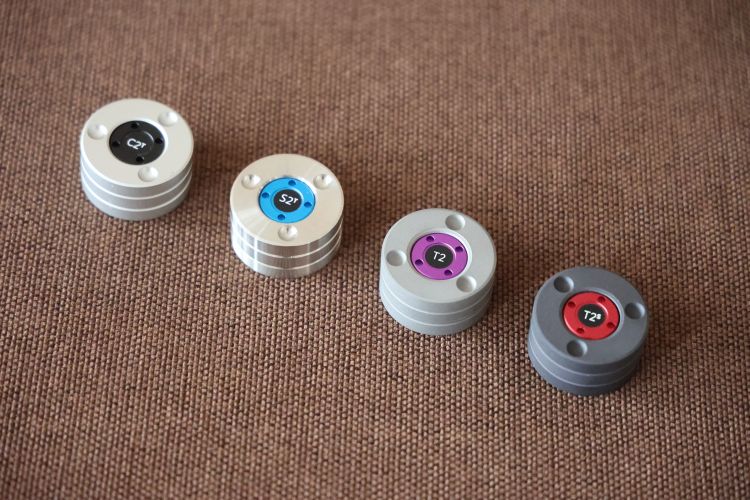
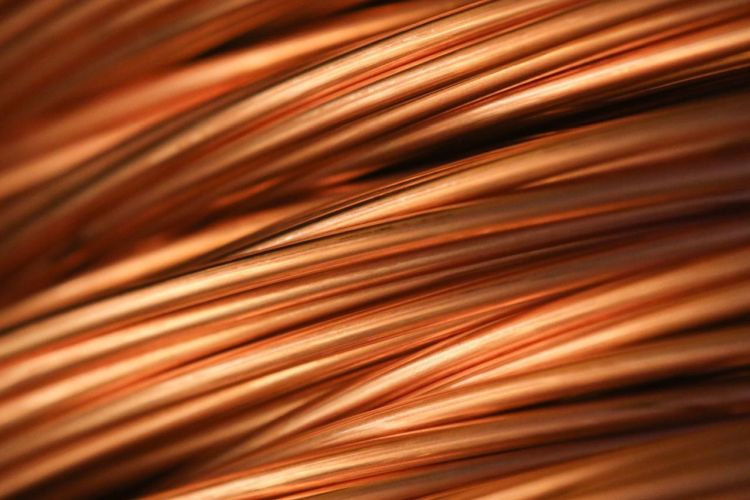
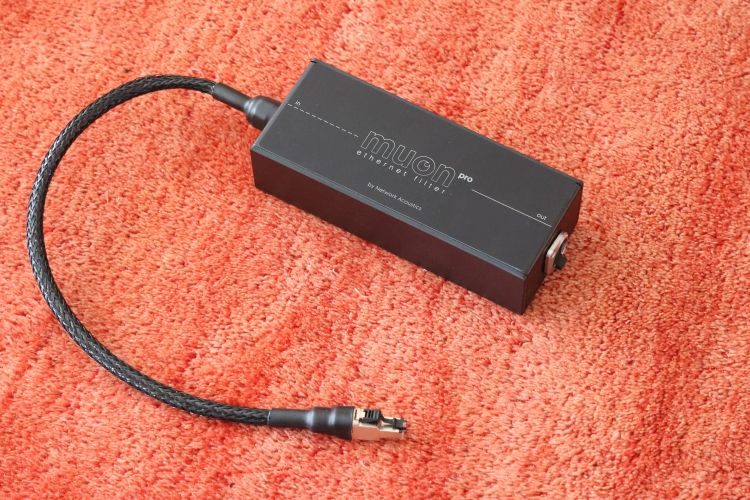
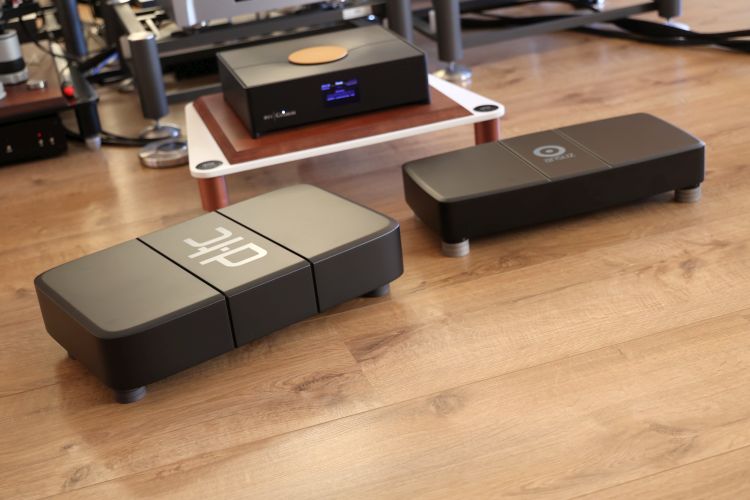
Hi Christiaan. The article you wrote in april about the G-C16A Circuit Breaker and this article about the Doepke DFS2 Audio Grade Differential Switch are interesting. Are these ‘tweaks’ also efficient if you are listening to a set – amplifier, CD-player and speakers – worth new € 3800,-. My experience with the new ( in Europe ) PowerQuest 3 and the power cables NRG-Z of Audioquest was this spring a real step forward. Can I do another great step with the Circuit Breaker and the Grade Differential Switch you are recommending? Thanks, Robrecht
Hi Robrecht, yes, I would say the circuit breaker and differential switch make just as much difference as a change of power cables and I believe this would also be audible in a less expensive system. Do note that in audio it is always about balance and that the changes incurred by these items must match what your system requires and are what you are looking for.
Hi Christiaan ,
After reading your review on the Gigawatt circuit breaker and now this Doepke DFS2 differential switch, I was very interested and interested, I decided to take the plunge with the additional Gigawatt cable in wall (3x4mm2)! I decided to create a dedicated line with the Gigawatt cable in wall from my electric meter (and not from my electrical panel!) To the room where my hi-fi system is located (about ten meters of cable!) Plugged into two Oyaide wall sockets (white) OYAIDE SWD-XXX-e Schuko Gold Plated / Palladium! So I will have to make a mini electrical box for the Gigawatt circuit breaker and the Differential switch!
What do you think please?
Thank you very much for your reviews!
Best Regards
Hi Pascal, You can install the diff switch and circuit breaker in the same electrical box you already have (if there is space) or you can indeed install a secondary one. I’m not sure if there would be an audible difference between these two options. Since you are opting for the (full and rich sounding) Gigawatt cable as well (which I left out in my install) and in audio it is always about balance I would suggest to go about this in steps. First, you could listen to the cable connected to a standard circuit breaker and then connect it to the Gigawatt circuit breaker. This way, you get a feeling for what it is that the individual components are bringing to the table. Because the Gigawatt wall cable already sounds voluptuous and the Doepke switch further adds to this, I would add it only if you feel that the sound could use more body and warmth.
Hi Christiaan ,
Ok, I will try to follow your suggestions!
But tell me, do you think we can make a quality mains cable with the Gigawatt in wall cable, for example to power my two REL S / 510 subwoofers? What do you think ?
Thank you very much for taking your time to answer and guide me!
Looking forward to reading you !
Best Regards
Pascal
Sure you can. Technically, there is no reason not to use this in-wall cable to power audio components directly but it will physically be less flexible than you might like. Also, getting it attached to connectors properly and with good strain relief may prove tricky. Then again, you probably won’t move the cables much if ever when they are used for subs. However, whether it is the ideal choice sonically for subwoofers or your setup, in particular, is something you need to try in order to find out. The Gigawatt cable, like pretty much any cable, has a certain character and thus it may or may not enhance the subwoofers’ sound quality. Most likely, it will make them sound fuller and bigger but perhaps also less articulate.
Hello Christiaan,
How are you after our last discussions?
I come back to after putting an injured left thumb with a Dewalt table saw! Damn It doesn’t forgive these machines! I got hot but I still got a serious cut! Home care by a (pretty) nurse has been prescribed to me!
In short … let’s come back to what fascinates us!
A question came to me, With my Doeoke DSF2 Differential, Do you think that we can put a second Gigawatt GC-16A circuit breaker, for example to supply only the amplifications (integrated tube amplifier, Anthem MRX 1120 audio / video amplifier, and my pair of Sub Rel S / 510)?
Thank you Very much !
Ay, a table saw is a dangerous tool, glad it’s not too serious! If you’re asking if you can connect a second GigaWatt circuit Breaker in parallel to the first one, then sure, that is fine. It’s the same as all the other Circuit Breakers that are connected like that. Depending on how much noise connected units put back on the mains (such as noisy switched power supplies), this can yield worthwhile positive results. This is because the by-products tend to be attenuated over the length of the cables. Also, you’re potentially lowering the impedance of the combined cables which could also lead to audible benefits. In any case, it should not hurt:-)
Hello Christiaan ,
it is precisely by observing my electrical panel with its differential and all its circuit breakers, that I asked myself the question, why not do the same thing with my Doepke differential and several Gigawatt circuit breakers (two or three), for example example a Gigawatt circuit breaker for amplifiers, another for analog sources and another for digital sources and even why not yet another for devices which have polluting switching power supplies! Also I saw on the Gigawatt site that there is a single pole circuit breaker (CG-16), what do you think?
Thank you Very much
Best Regards
Pascal
The single-pole GigaWatt version should work just as well but I haven’t compared it to mine and do not know if it sounds different. If you’re adding multiple groups, though, you’ll save a lot of money. Why not try one first and see if it performs as you expect. You can always add more later.
Dear Christiaan, Of course I will try a single Gigawatt breaker to start with to see what happens! For the rest, these are just questions I was wondering and wanted to share with you to find out what you thought! I neither have the means nor the habit to throw money out the window. On the other hand, can I highly recommend that you try to test the cables of the Canadian manufacturer LunaCables, I guarantee you that you will like them and in addition you will save money! It’s less good but it’s more expensive! Lol!
Thanks again !
Best Regards
Can you do a double blind test? I’m sure you can’t hear the difference.
I’ve done blind tests often enough to know I can trust my judgment. And I’m always happy to admit it when I don’t hear a difference. The difference with the Doepke is easy to hear. I have no reason to hear any changes, either positive or negative. All I have are expectations based on experience, which, by the way, are sometimes not met and that’s always refreshing. If you read more of my reviews, you’ll find several of such instances (cheap products being outstanding and vice versa) which I feel should be a good indicator that I have no confirmation bias.
Your judgment might be influenced subconsciously by the fact that you paid so much money for it, even if you think you can trust it. A double blind test would objectively prove it.
I just don’t see how the difference compared to a normal switch has an influence on the sound, it would be nearly not measurable. And the transformers and voltage regulators in your amplifier etc. would need to be really terrible to be influenced by such a small mains changes.
Hi ,
From your reaction, this suggests that you have tested it at home on your system and that you have not heard any difference, in this case (if you have!), It has been a rewarding experience for you. , you can move on! Be aware that our ears are not all in the same condition, especially with age, and we all do not have the same sensitivity to hearing things, feeling them or even touching them!
Personally, after purchasing and installing my Doepke DFS2 and G-C16A Circuit Breaker, I can’t go back!
Thank you Stephaan, on behalf of my hi-fi system !
No, I didn’t test it. But my electronics knowledge tells me, that such a small resistance variation for the mains supply has no effect. The variation in voltage caused by the switch is lower than the mains voltage variation over the day itself. Do you hear a different sound in the morning than in the evening when the voltage might be lower? Did you do a double blind test to be sure it is not your imagination? Nothing wrong with imaginations, the placebo effect works for some people exactly the same 🙂
Without wanting to offend you, your knowledge of electronics or electricity or IT … is not enough to understand everything and explain what is happening in the world of Hifi! I suppose you are also part of those who think that a power cable, a usb cable, an RCA interconnect cable and speaker cable of quality, has no effect on the rendering of a system, that basic cables do the same work and suffice? That wouldn’t surprise me! Stay in your beliefs and convictions that belong to you but at least have the decency to respect those of others! This is the basis of savoir vivre !
As I wrote, it might be true for some people, like the placebo effect can really help with someones headache, but don’t claim it has some measurable objective effect. Looks like nobody commenting here has done a double blind test, so there is no prove that it objectively sounds different than a EUR 20 switch.
And I have quite some electronics knowledge. Lets assume a bad circuit breaker, with 1 ohm resistance, and assume 200 W for the audio gear connected to it. At 230 V this would be 0.87 A. So the voltage drop at the switch is 0.87 V. This means the audio gear now gets 229.13 V instead of 230 V.
If this affects your audio gear, then you have a big problem, because mains is allowed to vary by +10%/-6&%, so from 217 V to 253 V. For example if some big motor in your neighborhood turns on in the morning, the mains voltage might drop already by several volts. With a super low resistance near 0 ohm, there would be no voltage drop caused by the switch, but it doesn’t matter, because even with a bad switch it is so low, that it is nothing compared to the natural mains voltage fluctuation, and the audio gear can regulate it with no problems. Most “hifi” gear might even use a switching regulator, and allows a voltage range from 100 V to 260 V, with no effect on the regulated DC voltage used inside the audio device.
But I could be wrong. So do a scientific double blind test and tell me the result, if you want to prove me wrong.
I hope you are not one of those guys who believe in directional speaker cables 🙂
I have nothing to prove to you, I have no time to waste, I have lost enough of it! And with your knowledge of electronics and other scientific measurements, build us a hi-fi device worthy of the name and come back and see us afterwards, not before! it should be very easy for you and all your electronics knowledge and scientific measurements! Lol !
Pascal, sorry to say that, but you’re WRONG. You HAVE to prove that your product delivers what you claim. To me, your posts imply that you are somehow connected to the company.
If one can really hear or even measure the difference of a sound on a 1 volt drop of mains voltage, that amplifier is crap. I think you’ll agree with that.
I have nothing to prove and even less to you! On the other hand, the hifi cannot be measured, if this is the case, I would especially not want to listen to your system which in this case must be devoid of life! the hifi is felt and it’s personal to everyone! everyone has their own sensitivity! And finally, it’s not the devices that have the best numbers measurable on paper, that deliver the best listening results! numbers and measurements are not everything! As proof, many musical instruments are tuned to the ear and not otherwise! And once again, learn to respect the opinions, feelings… of others! If you don’t like it, you know what you have to do! We won’t blame you!
Here’s my 2 cents. Obviously, I share Pascal’s viewpoint. Wolfgang uses logic and wants proof, we cannot provide it, thus he thinks either we are hearing things or the equipment is faulty or wrongly designed. It’s an age-old argument that I have heard many times before and so I see no point in joining the discussion on this matter. I propose we let the matter rest.
Hi Christiaan,
Yes there is a category of people who resonate from a scientific point of view regarding hifi! They are the same people who think that a usb or ethernet cable only carries 0s and 1s and that therefore any commercial usb ethernet cable will do, etc etc … While the hifi is a matter of personal feeling specific to each one that must be respected, which seems complicated to understand for some! But hey, don’t try to convince them, it’s a waste of time! So the “debate” is closed!
To return to what interests us, I continue the adventure with my DFS2 and my GigaWatt G-C16A 2P and even think of adding a second GigaWatt G-C16A 2P, one for digital sources (Blu-ray player included) and the ‘another for analog sources (including my tube amp)! And I imagined installing another mains line with another DSF2 + G-C16A that for my home cinema system (Videoprojector included), we will see what it gives musically speaking and on the screen eh and not scientifically because I would be unable to prove it! 😁!
Greetings !
PS : I am about to experiment with the Firewall 640x (100% passive) mains conditioner from LessLoss, in its DIY version, which I will put in my new power strip (6 sockets) in noble wood made by myself and wired with the technique say in star!
The line impedance in urban areas in Germany is 0.5 Ohm and can be up to 2 Ohm in rural areas. Your offer is balderdash, rip-off.-
Take the piss out of Yourself!
I personally judge the series connection of a RCD and a fuse as a technologically outdated solution: Too many contacts. But for years now there are RCBOs available which combine the formerly two units. This saves at least one of the three contacts in series. Unfortunately Doepke is offering only standard RCBO and not “audio” grade.
The additional inductance to detect the differential current should be a minor problem as it is only effective for the differential current.
Anyway, a test with a RCBO instead of RCD-fuse would be very interesting.
You’re right, Rolf, and I agree. A combo RCBO should be ideal.
Hello,
I just bought a Doepke DFS2 Differential Switch, and a Gigawatt G16A 2P.
According to the operating standards, can you tell me how to wire these two devices:
– line coming directly from the meter to supply the Doepke (terminals noted 1-2-3-4) which Phase and Neutral inputs / which Phase and Neutral outputs to supply the Gigawatt afterwards?
– on the Gigawatt (terminals not marked on the device) which Phase and Neutral inputs (coming from the Doepke) / which Phase and Neutral outputs to go to the Hifi devices?
I would be very grateful to have this information please?
Best regards.
Philippe.
Hi Philippe, first, a disclaimer. I am not a technician. Second, the directionality may lead to audible differences but I did not experiment with this. Alas, I agree that it’s annoying that the units are not clearly marked.
I believe that the standard is to feed power from underneath and to have the load (your system) connected from the top.
In my case, however, the installer mounted the Doepke a little differently. It gets its neutral input top left (1) and phase input top right (3). Its outputs are correspondingly bottom left (2) for neutral and bottom right (4) for phase.
The Gigawatt was installed upside down so that its “on” legend can be read. Thus, it gets its input from the top and outputs on the bottom.
With respect to the “official” Gigawatt connection, I was told that it can be used in both directions. Where you put Phase and Neutral certainly does not matter since the unit consists of two identical single devices.
Merci Christian !
Beste Christiaan, Ik heb na wisseling van de zekeringskast dat steeds de groep uitviel vanwege bij aan/uit mijn actieve speakers te veel vermogen vroegen.
Samen met de elektricien besloten een aparte groep te maken met alleen bekabeling voor de audio. Dat was een reuzeklus, door de kruipruimte en naar buiten en weer naar binnen want onder aanbouw konden we niet komen.
De GigaWatt G-16A 2P ertussen gezet. Maar zonder de aardlekschakelaar! Wat een rust! Met een 0,2mV element en een SuT ertussen ook geen brommetje te horen, aarde ook niet aangesloten. Ik snap niet dat audioliefhebbers moeilijk doen over dit soort aanbestedingen. Wel veel geld uitgeven aan conditioners, filters, interlinks, power- en speakerkabels en noem maar op. Dit is de basis voor een goed geluid. Ik zet wel aparte bekabeling op nummer 1, dus los van andere bekabeling waar andere stroomhappers van eten.
Daarbij vertelde mijn elektricien dat ook bv in ziekenhuizen verschillende stopcontacten zijn. Ook daar voor meetapparatuur die van belang is, loopt er aparte bekabeling met speciale (gekleurde) stopcontacten. Daar mag absoluut geen storing op komen.
Nu de vraag, heb je de GigaWatt G-16A ook zonder aardlekschakelaar aangesloten en zo ja , gaf dat voordeel.
Your issue was probably a high inrush, not the speakers asking too much power. Normally, there should either be a circuit in a product that slowly ramps up the power inrush or you could use a switch/breaker with a slower response that is not triggered by this, so, you wouldn’t normally need a separate audio group for this alone. That said, a separate audio group does bring clear sonic benefits and I agree that the expense is low compared to the equipment that we tend to buy. I’ve heard from various sources that skipping the Residual Current Circuit Breakers or RCCB (aardlekschakelaar) brings considerable benefits (among others, a freer sound with less dynamic restraint) but for me, as a reviewer who frequently swaps equipment, sometimes prototypes or of doubtful origin, safety comes first, so I don’t want to bypass it.
Hi Christian,
Thanks for your great review.
Could you please let me know which cable you used and gave the best results between the Doepke and the Gigawatt inside your cabinet?
I am hesitating between using a piece of LC-Y EVO cable and 16mm2 wires.
Your recommandation will be highly appreciated.
Cheers
Hi Tom, I personally prefer solid core installation wire and use that everywhere in the breaker box, as well as for the main cable leading to the audio group.